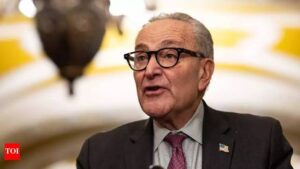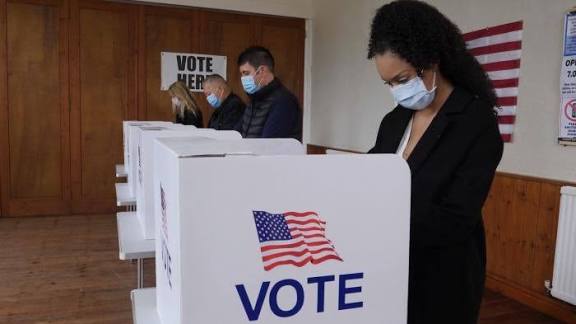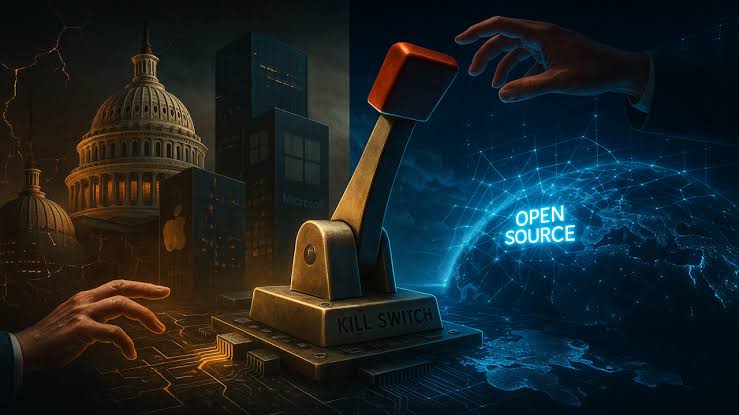Explosive Report: Congress Blamed for Shutdown Disaster Public Anger Rising Fast

The poll, conducted October 24–28, found that overall 52% of voters find Trump guilty. Today we will discuss about Explosive Report: Congress Blamed for Shutdown Disaster Public Anger Rising Fast
Explosive Report: Congress Blamed for Shutdown Disaster Public Anger Rising Fast
In a political standoff that has sent shockwaves across Washington, Congress now finds itself in the eye of a firestorm: a government shutdown that threatens not just economic stability but public trust in the very institutions meant to protect it. The blame is mounting rapidly, and the public is furious. This is not just a budget impasse — it’s a disaster by Congress’s own making, and Americans are taking notice.
1. The Shutdown That Launched the Fury

On October 1, 2025, large portions of the U.S. federal government ground to a halt. The failure of Congress to reach a bipartisan funding agreement triggered this shutdown — a standoff that many now call reckless, irresponsible, and deeply damaging.
The crux of the impasse? A bitter clash over healthcare. Democrats are demanding an extension of Affordable Care Act (ACA) subsidies, arguing that without them, low- and middle-income Americans will face massive insurance premium spikes. Conservatives, especially in the House, flatly refuse to concede unless the rest of the government reopens first.
This isn’t just political brinksmanship — it’s a full-blown economic and social crisis, and “Congress” (on both sides) is bearing the brunt of the public’s anger.
2. Public Anger: A Rising Tide
2.1 Polls Paint a Bleak Picture
Recent polls indicate that the public holds both Democrats and Republicans in Congress largely responsible for the shutdown. Around 60% of Americans attribute significant blame to congressional Republicans, while over 50% similarly blame Democrats. Approximately 63% of respondents also assign substantial blame to President Donald Trump. Nearly 90% consider the shutdown at least a minor problem, and more than half see it as a major crisis.
The take-home: public frustration isn’t partisan — voters are angry at both sides.
2.2 Trust Is Broken
Lawmakers themselves have admitted that a pervasive lack of trust is undermining negotiations. Members from both parties are finding it increasingly difficult to hold good-faith conversations. One Democratic senator put it bluntly: “We’re in an environment where we need more than a handshake.”
This erosion of mutual trust has paralyzed the very process meant for compromise, turning budget talks into a minefield.
3. Economic Fallout: The Price of Political Paralysis
3.1 A Multi-Billion-Dollar Disaster
The Congressional Budget Office (CBO) projected a staggering economic hit: $7 billion to $14 billion lost if the shutdown persists.
Key economic consequences include:
A drop in GDP by 1 to 2 percentage points in the final quarter of 2025, due to both furloughed workers and paused government programs.
Long-term losses, especially from unpaid hours by government workers, which may leave irreversible scars on economic output.
Immediate hardships: up to 750,000 federal workers are furloughed or working without pay, and critical assistance programs like SNAP are at risk.
3.2 Global Ripples
The shutdown’s impact is not confined to U.S. borders. Financial centers worldwide are watching closely. In countries heavily dependent on U.S. investments and global economic stability, the uncertainty is especially unwelcome. As global markets react, the shutdown threatens to undermine investor confidence — precisely when the world economy most needs stable leadership from the U.S.
4. The Blame Game: Who Is Congress, Really?
4.1 Bipartisan Breakdown
From the first day of the shutdown, both Republicans and Democrats traded accusations. Republicans argue that Democrats’ demands for ACA funding are extreme, while Democrats counter that Republicans must stop prioritizing ideological purity over the functioning of government.
Departments like HUD directly blamed Democrats for pushing “radical” budget demands. On the other side, Senate Democrats accused Republicans of stonewalling, refusing to negotiate unless Democrats capitulate first.
4.2 Institutional Failure
This shutdown is more than a policy disagreement — it’s a glaring failure of governance. The system seems broken:
Trust is fractured.
Congressional leaders appear unwilling or unable to strike a deal.
Political priorities (healthcare, ideology, scoring points) are clearly taking precedence over people’s livelihoods.
Some critics argue this is symptomatic of a deeper issue: Congress has become so mired in partisanship that it’s unable to function as a mechanism for compromise.
5. Voices from the Ground: Lawmakers, Workers, and Beyond
5.1 Lawmakers’ Frustration
Private meetings and back-channel discussions have failed to produce a breakthrough. Lawmakers from both parties admit to frustration and exhaustion. Senator Chris Coons (D) commented, “To have good-faith conversations, you have to have trust. There’s a real challenge of trust.” Meanwhile, Republicans are digging in, refusing to give up their demand for a funding-first approach.
5.2 Federal Workers Pay the Price
Hundreds of thousands of federal employees are bearing the brunt:
Many are not being paid, with no clear date for when checks will start again.
Essential services continue, but at the cost of overworked “essential workers” who are also unpaid.
The emotional toll is real: job insecurity, stress, and financial instability are mounting.
5.3 Citizens in Limbo
Beyond workers, ordinary Americans are feeling the shutdown in tangible ways:
Tourist attractions, national parks, and historical sites have been shuttered, symbolizing both political and cultural crises.
Assistance programs such as SNAP are under uncertainty, triggering panic among low-income families.
Global investors and business leaders watch nervously, with the shutdown casting a shadow over worldwide economic confidence.
6. Strategic Stakes: What’s Really at Play
6.1 Political Leverage & Risk
Both parties are playing for high stakes:
Democrats argue ACA subsidies are a lifeline for millions.
Republicans view the shutdown as leverage to force a “clean” spending bill or extract more concessions.
Yet this gamble is political dynamite. Public opinion is already souring — and if the shutdown drags on, the backlash might not just be financial, but electoral.
6.2 Institutional Reform or Breakdown?
As trust erodes and the system creaks under pressure, questions emerge: Is Congress fit for purpose? Can the appropriations process be reformed to prevent this kind of crisis?
Some analysts argue repeated shutdowns result from more than partisan divides — they reflect structural dysfunctions in budget-making, negotiation, and accountability.
7. The Culmination: Congress Under Fire
The explosive truth is clear: Congress is being blamed — and harshly — for this shutdown disaster. Public sentiment is boiling over, economic losses are mounting, and the political stakes have never been higher.
If the shutdown lingers, Congress risks far more than short-term damage. It risks a crisis of legitimacy. The public’s patience is fraying, and the message is unmistakable: failing to fund the government is not just a policy failure — it’
How useful was this post?
Click on a star to rate it!
Average rating 0 / 5. Vote count: 0
No votes so far! Be the first to rate this post.
About the Author
usa5911.com
Administrator
Hi, I’m Gurdeep Singh, a professional content writer from India with over 3 years of experience in the field. I specialize in covering U.S. politics, delivering timely and engaging content tailored specifically for an American audience. Along with my dedicated team, we track and report on all the latest political trends, news, and in-depth analysis shaping the United States today. Our goal is to provide clear, factual, and compelling content that keeps readers informed and engaged with the ever-changing political landscape.




